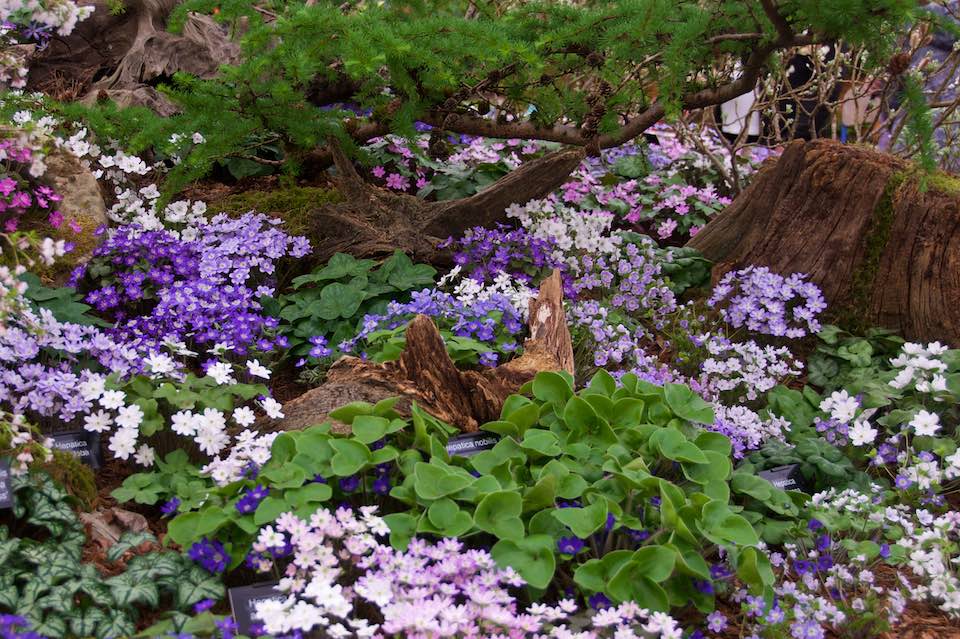As much as I love RHS Chelsea and look forward to seeing the incredibly hard work rightfully rewarded on medal day, I simply loathe the televised medal awarding charade. The whole proceeding is rather uncomfortable. In the seemingly endless search of television smaltz, participants, whom at this stage of the show are so exposed from sheer exhaustion, are made to walk the plank for all to see if they’ll sink or swim. Surely, as the platform to ‘share the best in gardening‘, providing a fix for the schadenfreude brigade has no place at Chelsea?
Despite all of this, shamefully I did watch it. Only to be proved right. Where the news does not provide golden relief, it is simply awful to watch anyone, drained but still full of hope, being so bitterly disappointed. We really don’t need to see that part of the proceedings on television. People can argue the hind legs of entire fields full of donkeys that non-gold medallions at Chelsea are wonderful, but through the camera lens it’s simply an exhibit not worthy of being a gold.
Amongst all this televised bathos, I have to admit there was one big exception; John Massey’s interview. John Massey of Ashwood Nurseries, won a gold medal for his outstanding Hepatica exhibit in the Great Pavilion. I would hazard a guess that there wasn’t a dry eye amongst the viewing public, when overcome with emotion of his incredible achievement, the good man, unable to speak could only turn to Carol Klein’s embrace for support.
Hepatica heaven
With the help of Rupert Golby, the garden designer and Simon Bagnall, Head Gardener at Worcester College Oxford, John Massey created a beautifully serene, woodland Hepatica display.
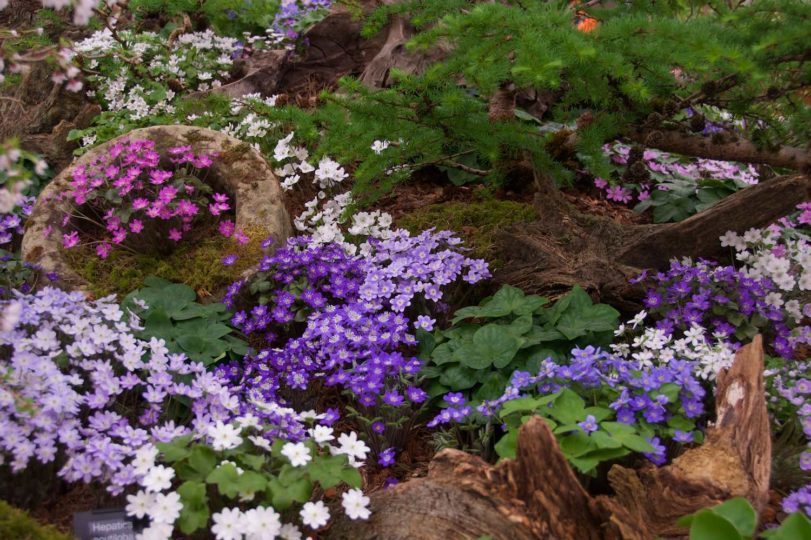
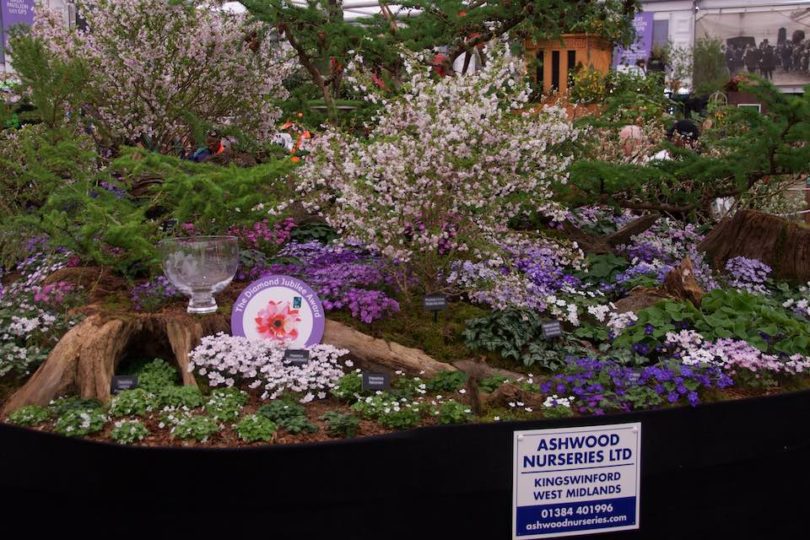
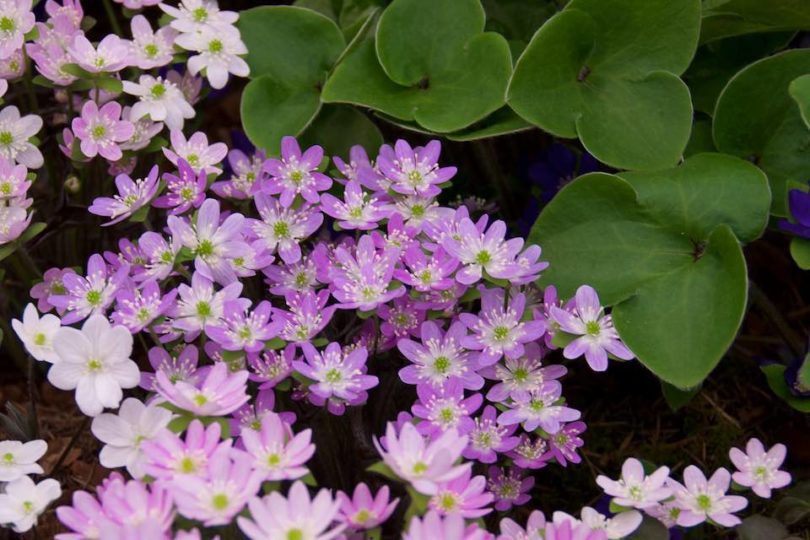
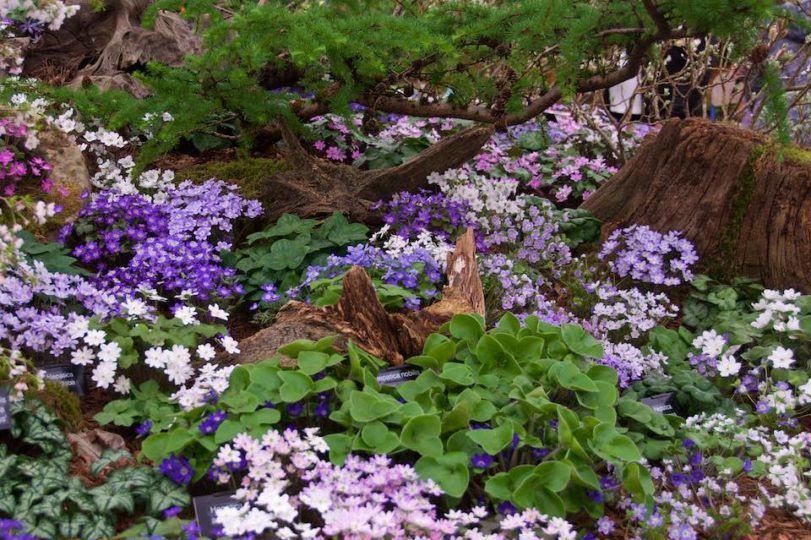
Massey’s exhibit was extraordinary. A sea of pale blues, purples, pinks and whites ran carefully throughout the display, over tree stumps and underneath small bushes and pine trees. Twelve species of hepatica were on show, alongside a range of inter-species hybrids – some of which are the good man’s own handiwork. A first for Hepaticas as a single exhibit at Chelsea. Possibly their last too, as Massey explained it may just have been too stressful for a repeat showing next year. For the plants that is. ‘I wouldn’t like to put the plants through it again‘, he explained1.
It may sound overly soppy and smaltz-affected, but I am very grateful to team Massey for the introduction to the hepatica, and feel privileged to have seen this once in a lifetime display. ‘It’s like listening to live music. You go to the concert and you’ll never get the same thing again. That’s what makes it so special‘, said Massey2.
Plants or bust
Given a chance to digest not only his gold accolade but also the coveted Diamond Jubilee award, Massey highlighted the mammoth effort required by nurseries to take part in an RHS Chelsea Flower Show.
In the case of Massey’s early spring flowering Hepaticas, months of careful refrigeration and juggling sunlight exposure to achieve delayed flowering for Chelsea – at the end of May. ‘Up until 5 days ago, we didn’t know if we’d be able to put on the display‘, explained Massey to Rachel de Thame in a subsequent interview. The stress and anguish of such a venture must have been enormous. Especially so when exhibiting at Chelsea means so much. ‘You dream of doing it and hope it’ll happen‘, said Massey3.
Plantsmen and women work incredibly hard all year, make notable (financial) sacrifices and overcome physical & mental obstacles to be (RHS) rewarded for their plant passion. Massey is a case in point, but also very much echoed throughout the Great Pavilion. ‘You put your life on hold for basically a year‘, explained Massey4.
Plant enrichment
Along with his fellow Great Pavilion occupants, Massey is an increasingly rare breed. The economics of the plant business is far from favourable, especially so when the product line is species specific. Exhibiting at Chelsea especially, is not just costly in terms of growing show plant material, but there are London costs to consider whilst exhibiting, and the considerable opportunity costs of show participation. Hardly surprising therefore, that fewer appear at the show every year. And yet, the value of their presence in the pavilion shouldn’t be underestimated. RHS Chelsea is after all, a flower show.
Speaking as an avid gardener, I knew very little of Hepaticas before the show. Massey’s exhibit has changed that, and I would hazard a guess that echoes for others too. And even if this garden may perhaps never see a hepatica, I am grateful for the lesson and, for the newly acquired appreciation of a plant genus. Through the efforts of plant stalwarts such as John Massey and his fellow pavilion exhibitors, the RHS Vision ‘to enrich everyone’s life through plants‘5 has certainly come to fruition.
A helping hand?
As the (economic) odds as so stacked against nurseries, I can’t help but wonder how many other specialist nurseries are out there with another such incredible plant story to tell, and whom could also bring some of that John Massey ‘hepatica magic‘ to the show.
As much as I love them, and have been part of them, show gardens soak up much of the focus of Chelsea. For some inexplicable reason, the Great Pavilion seemingly always comes second. No axes to grind here, but the RHS partake in that show garden focus, where they of course have their own (non-judged) show gardens. This year it was the turn of the fabulous Ann-Marie Powell, who created a beautiful RHS show garden to build awareness of the positive effects of gardening on health and happiness. Could we not see such a venture echoed in the Great Pavilion? Sarah Eberle for Hillier and John Massey for Ashwood Nurseries have certainly proved that exhibits in the pavilion can be just as sexy as show gardens, and even managed to challenge some of their media spotlight.
Embroidering on the RHS ‘Enrichment through plants‘ theme, could there not be special (RHS) bursary to fund a selected number of specialist nurseries to exhibit at the show whom would otherwise be (financially) inhibited from doing so? There is no reason why such a venture could not be sponsored, and in fact if well enough publicised could be of value to sponsors. After all, it’d be a novelty to bring some of that sponsorship booty into the Pavilion. Furthermore, just as it has done to support new show garden designers, this venture could even be paired with a similar (show garden focussed) programme such as ‘The Great Chelsea Garden Challenge‘ if need be?
As grand and as beautiful as show gardens are, in the Pavilion one tiny little plant; the Hepatica, proved that it could stand up to the show garden hype and be counted. How more like it are out there?
Footnotes
- BBC Two, RHS Chelsea Flower Show 2016
- BBC Two, RHS Chelsea Flower Show 2016
- BBC Two, RHS Chelsea Flower Show 2016
- BBC Two, RHS Chelsea Flower Show 2016
- RHS Vision, Autumn 2015
